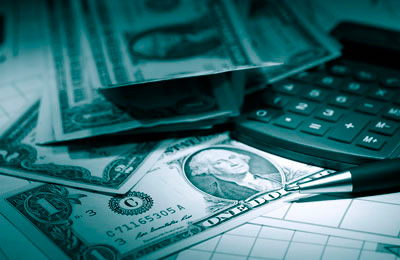
ME banks facing rare domestic currency drought
LONDON, October 15, 2015
Acutely tighter liquidity conditions in Gulf banking systems are casting doubt on how easily the region's lenders will be able to support their sovereigns' growing funding needs as depressed commodity prices take their toll.
The fortunes of Gulf sovereigns and banks are inextricably linked, with many lenders state owned.
And with oil prices struggling to rise much above $50 a barrel, governments are having to shore up their finances by borrowing in the capital markets and investing less money in their banking systems.
At the same time, these banks are under pressure to buy the sovereign debt that is being issued.
"A lot of sovereigns historically have never needed to fund themselves and now need to do so," said a senior capital markets banker in London. "Those that are doing so domestically are mopping up local liquidity."
Oman is the latest Gulf sovereign tapping its domestic market to make up some of the funding gap left by low oil prices, opening subscriptions for its debut issue of Islamic bonds. The rial-denominated sukuk will be open until October 22.
Saudi Arabia has already raised SR55 billion ($14.66 billion) since July through its first bond deals in eight years, with more issuance likely this year and next.
Standard & Poor's reckons Saudi Arabian banks have enough cash to absorb up to $100 billion of bonds.
But cracks are beginning to appear across the region. "Governments are issuing more debt than banks expect and they cannot absorb all of it," said a London-based analyst.
The trouble is that banks have fewer funds. "We are seeing certain signs of weakness in the deposit liquidity of banks," said Timucin Engin, a director in S&P's financial services division.
Government deposits fell by 14 per cent in the UAE and three per cent in Saudi Arabia in the first half of 2015, according to S&P.
Another bank analyst estimates that up to 30 per cent of deposits in some Gulf banks have historically been government-linked.
To make matters worse, it is getting more expensive for Gulf banks to fund themselves. The three-month interbank rate in Saudi Arabia and the UAE - the region's two largest markets - has risen by around 10bp in the last three months, according to Standard & Poor's.
Meanwhile if banks were thinking of heading to the capital markets, they will likely have to pay a new issue premium of 25bp to 50bp, according to a syndicate banker.
Strains in the sovereign-bank relationship were seen in Qatar when a bond auction in September stunned the market. Qatar blindsided banks by selling QR15 billion ($4 billion) of bills, way above the QR4 billion that was expected.
"No bank expected the full amount to be asked for," said the bank analyst. "It has spooked the market, everyone was incredibly surprised."
Qatar's next auction in October only raised QR2 billion - half of its target. Analysts reckon this was partly down to banks putting in more conservative orders, but also tighter liquidity.
NO CRISIS, YET
While a full-scale credit crunch is still some way off - bond bankers in the Middle East say that the problem is nowhere near as pronounced as during the heart of the 2008 global financial crisis - the acute disappearance of local currency buffers is causing plenty of worry among market participants.
One means of easing the situation would be for governments to borrow less and cut spending. "But how easy will it be for Saudi Arabia to cut spending?" asked the London analyst, especially as the government pumped money into the economy in response to the Arab Spring uprisings of late 2010 and 2011 to prevent civil disturbance in the Kingdom.
The Gulf Research Centre, a think-tank, put total Saudi spending on welfare from the outbreak of the Arab Spring to April 2013 at $93 billion. Sustained spending is still important for social stability in the country, according to the London analyst.
Moody's estimates that Saudi's budgetary breakeven oil price is around $100 a barrel. Other Gulf states including Oman and Bahrain have even higher breakeven levels, according to Deutsche Bank.
So curbing projects may not be far off. While there may not be an immediate slowdown on important infrastructure developments in the Gulf, "those projects which are under the 'wish-list' bucket might see a re-prioritisation if we see a prolonged low oil price environment," said Suha Urgan, associate director, financial services, at S&P. - Reuters







